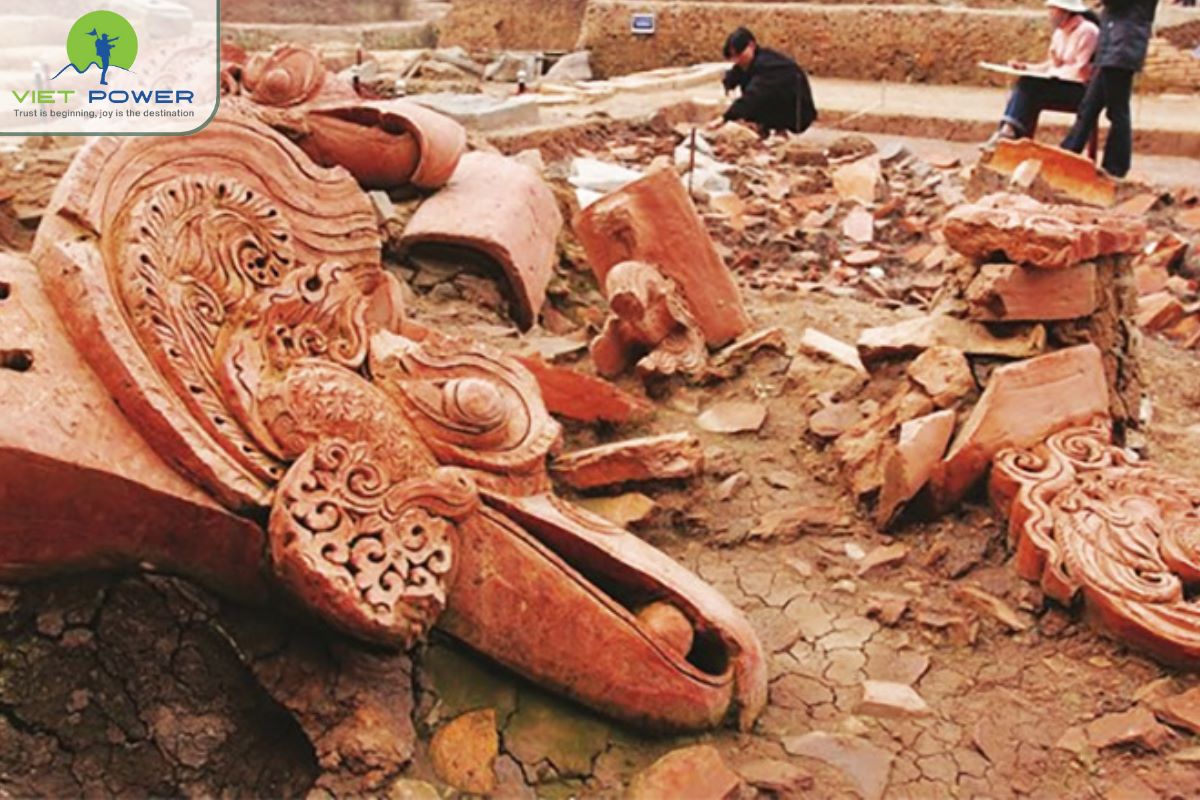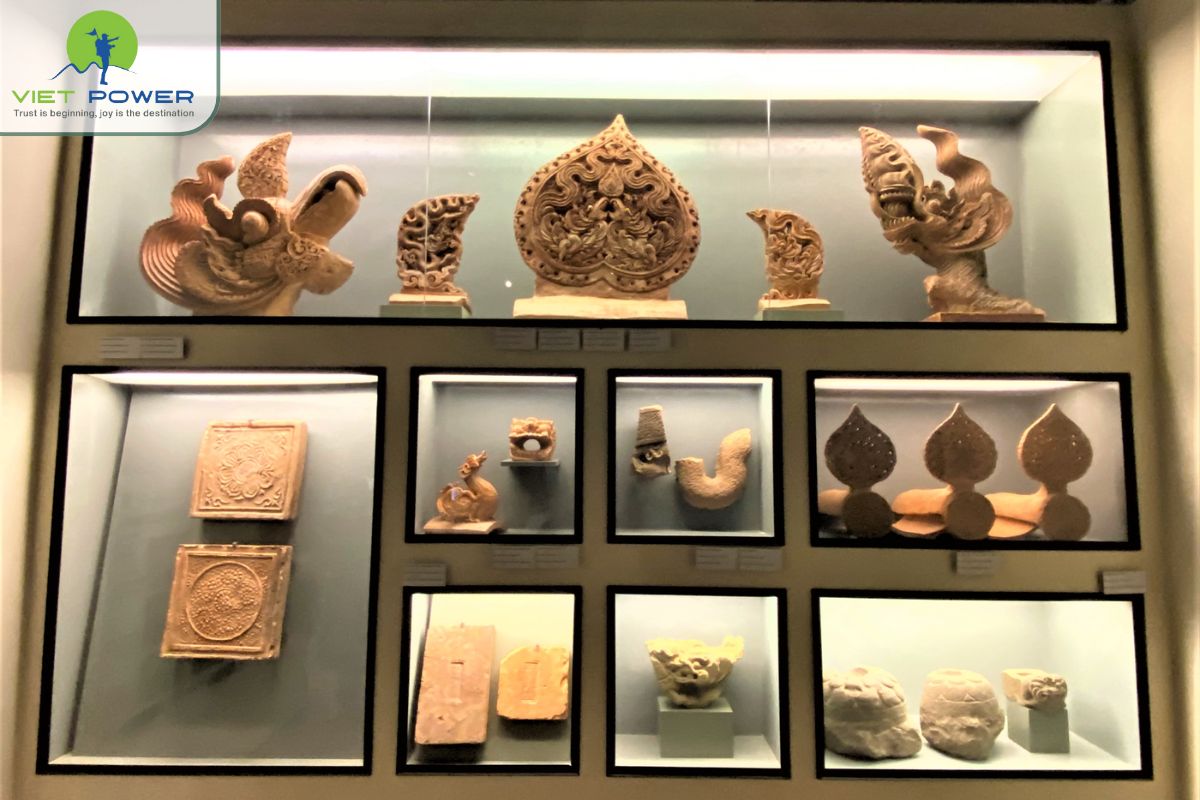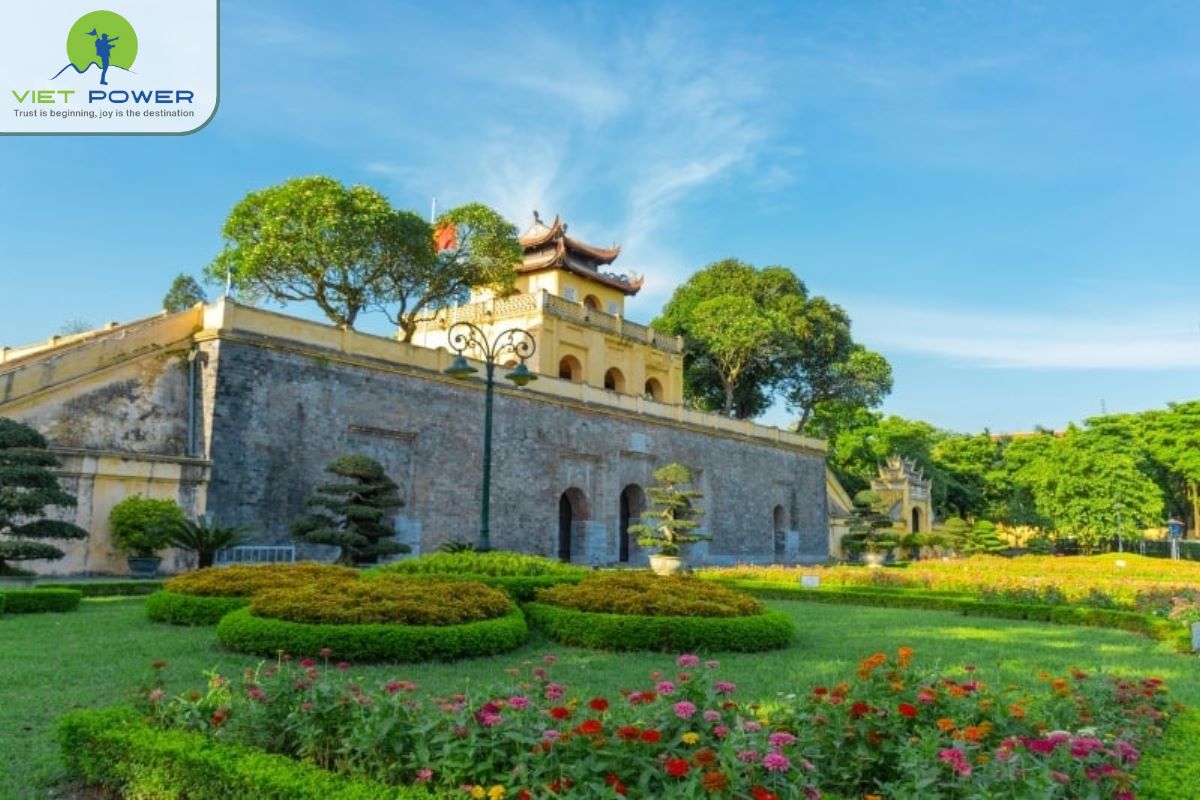The Imperial Citadel of Thang Long is a proud symbol of Vietnam’s rich history and cultural identity. Recognized as a UNESCO World Heritage Site, this ancient citadel in Hanoi tells the story of Vietnam’s thousand-year civilization and enduring spirit. In this post, Vietpower Travel invites you to explore the timeless beauty, historical depth, and cultural significance of this majestic site - a journey that connects you with the very heart of Vietnam.
The Imperial Citadel of Thang Long, also known as the Thang Long Citadel, is located in the heart of Hanoi, Vietnam. This historical complex served as the political and cultural center for over 10 centuries, witnessing the rise and fall of dynasties from the Ly, Tran, Le to Nguyen periods.

Visitors can explore impressive relics such as Doan Mon Gate, Kinh Thien Palace, Hau Lau (Princess Pavilion), and Bac Mon Gate, as well as archaeological displays and 3D virtual heritage tours that bring ancient Thang Long back to life. Today, the Imperial Citadel of Thang Long Hanoi stands as a cultural treasure and a must-visit destination for travelers passionate about history and architecture.
You can find more posts related to this topic in our Vietnam tourist attractions category. Explore detailed travel guides, destination highlights, and inspiration for your next journey through Vietnam.
The story of the Thang Long Citadel began in the 7th century, when it was first known as Dai La Citadel, built under the Tang Dynasty (An Nam Protectorate). Later, in the 9th century, it was rebuilt and expanded by Gao Pian, a Chinese governor, turning it into one of the strongest fortresses in northern Vietnam at that time.
In 1010, King Ly Thai To, the founder of the Ly Dynasty, moved the capital from Hoa Lu (Ninh Binh) to Dai La. As his royal boat entered the city, he saw a golden dragon rising into the sky. Believing it to be a good omen, he renamed the city “Thang Long”, meaning “Rising Dragon” - symbolizing strength, prosperity, and national pride.
From that moment, Thang Long became the political, cultural, and economic heart of Vietnam for more than eight centuries, through the Ly, Tran, Le, and Nguyen Dynasties.

The ancient capital was built with three main layers:
Throughout history, Thang Long underwent many changes. During the Tran Dynasty (13th-14th century) and Le Dynasty (15th-18th century), new palaces, temples, and royal structures were built. By the Nguyen Dynasty, the capital moved to Hue (1802), and Thang Long became known as Bac Thanh (Northern Citadel).
In 1882, when the French colonial army invaded Hanoi, most of the original citadel was demolished to build military barracks and government offices. Only a few key structures survived, such as Doan Mon Gate, Kinh Thien Palace foundation, Hau Lau (Princess’s Palace), and Bac Mon (Northern Gate).
Today, what remains of the Imperial Citadel of Thang Long Hanoi stands as a symbol of resilience and continuity. Beneath the surface, archaeological excavations at 18 Hoang Dieu Street have revealed layers of relics - ceramics, foundation stones, and ancient wells - that tell stories of over 1,300 years of continuous development.
Every stone, gate, and brick here holds the memory of Vietnam’s royal past - a story of kings and dynasties, of rises and rebuilds, and of a nation that has always stood tall through time.
What makes the architecture of Thang Long Citadel so unique?
The architecture of Thang Long Citadel combines Vietnamese royal design, Confucian harmony, and Southeast Asian elegance. It reflects balance, respect for nature, and the artistry of Vietnamese culture.
In traditional royal architecture, buildings face south to welcome prosperity and peace. The layout follows Confucian principles of symmetry and moral order, while curved roofs, dragon and phoenix carvings, and open courtyards show the creative touch of Southeast Asian art.
Main attractions include:
Each structure reflects the grandeur and precision of ancient Vietnamese craftsmanship, symbolizing both political authority and cultural depth.

Fun Fact: When the Kinh Thien Palace was excavated, archaeologists found stone dragons with gentle faces and soft lines, unlike the fierce dragons in Chinese art. This shows how Vietnamese kings valued grace and peace over power - a unique trait that makes Thang Long’s architecture stand out in Southeast Asia.
For over 1,000 years, the role of Imperial Citadel of Thang Long has been the political and cultural center of Vietnam. This was where emperors ruled, royal ceremonies took place, and key decisions that shaped the nation’s destiny were made.
Beyond politics, the citadel was also a symbol of royal culture - preserving classical Vietnamese architecture, art, Confucian traditions, and spiritual values that deeply influenced the country’s identity.

Because of its central importance, people from across the kingdom came to live, trade, and work around the citadel. Over time, this area developed into the famous Hanoi Old Quarter, where each street specialized in a unique craft - from silk and silver to herbal medicine.
Today, travelers can explore both the Imperial Citadel and the Old Quarter to experience how ancient history and modern life blend seamlessly in the heart of Hanoi. This connection between past and present is what makes Hanoi and Vietnam - truly special.
In 2010, the Imperial Citadel of Thang Long - Hanoi was proudly inscribed as a UNESCO World Heritage Site. This event marks a thousand years since King Ly Thai To established the capital in 1010.
This global recognition honors the citadel’s unbroken history, unique architecture, and profound cultural influence across Asia. Thang Long is one of the rare heritage sites worldwide that shows continuous urban development spanning from the 7th to the 19th century - a living timeline of Vietnam’s evolution through dynasties and colonial eras.

Archaeological excavations here have uncovered ancient palaces, pottery, royal seals, and drainage systems, all offering invaluable insight into Vietnam’s imperial legacy.
Together with other UNESCO World Heritage Sites in Vietnam such as Hue Imperial Citadel, Hoi An Ancient Town, My Son Sanctuary, and Ha Long Bay - the Imperial Citadel of Thang Long forms a vital chapter in Vietnam’s story, connecting the nation’s royal past with its vibrant present. A visit here is not just a step back in time, but a journey through the very heart of Vietnam’s cultural identity.
Is it suitable for family or student visits?
Absolutely! The site offers guided educational tours and interactive exhibits that make it a fun and meaningful experience for visitors of all ages. The Imperial Citadel of Thang Long is located at 19C Hoang Dieu Street, Ba Dinh District, Hanoi, right in the center of Vietnam’s capital.
The site opens daily from 8:00 AM to 5:00 PM, and the entrance ticket costs 30,000 VND per adult. For updated details and events, you can visit the official website at hoangthanhthanglong.vn.
Best time to visit: From October to March, when the weather is cool, dry, and pleasant - ideal for sightseeing and photography. If you visit early in the morning, you can enjoy softer light, fewer crowds, and a calm atmosphere. Guided tours in English, French, and Japanese are available to help you understand the site’s rich history and culture.
Around the Citadel, visitors can also explore several nearby attractions that reflect Hanoi’s deep cultural roots and historical charm:
Whether you are passionate about history, curious about culture, or simply looking to experience authentic Hanoi, a visit to the Imperial Citadel of Thang Long and its surroundings offers the perfect balance of heritage, beauty, and discovery. You can find some interesting reviews on the Internet, or explore our post reviewing of Thang Long Citadel.
The Imperial Citadel of Thang Long is more than an ancient fortress - it is a living witness to Vietnam’s thousand-year legacy, where history, architecture, and culture harmoniously blend. A visit here offers travelers a profound connection to Hanoi’s imperial heritage and national pride. Plan your cultural journey with Vietpower Travel and continue exploring other Vietnam tourist attractions that honor the timeless charm and traditions of this beautiful country.